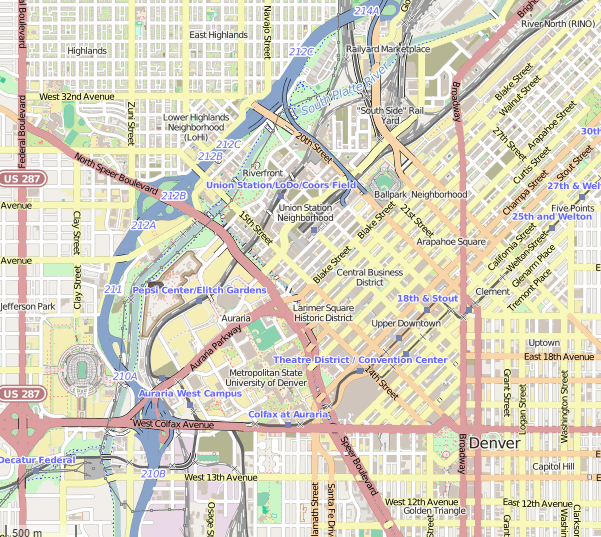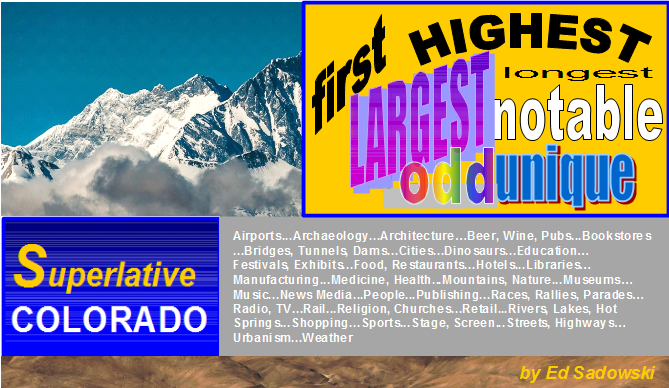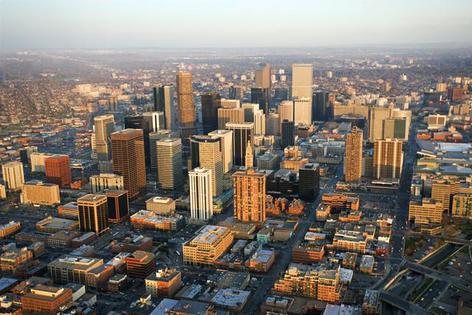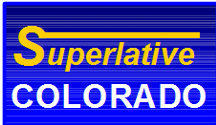Map: © OpenStreetMap contributors
Another Ed Sadowski creation
Transit
Airports...Archaeology...Architecture...Art...Beer, Wine, Pubs... Bookstores...Bridges, Tunnels, Dams...Churches, Religion... Cities... Dinosaurs... Education...Events, Festivals...Food, Restaurants..Hotels... Libraries... Manufaturing...Health, Medicine...Mountains, Nature... Museums... Music...News media...People...Publishing...Races, Rallies, Parades...Radio, TV...Rail transit...Retail...Rivers, Lakes, Hot Springs...Sports...Stage, Screen...Streets, Highways, Infrastructure... Urbanism...Weather, Climate
Downtown
Denver
TRANSIT
Denver City Railway Bldg.
Hotel Teatro
Moffat Station at Balfour at Riverfront Park
Old Spaghetti Factory / Denver City Cable Bldg.
Tuk tuks
Union Station
Denver City Railway Bldg. //////////////////////////////
17th and Wynkoop
This building was the birthplace of Denver's public transportation system.
The city fathers initiated a move to public transportation in Denver in 1867, but it was not until 1871 when the first line, consisting of horse-drawn trolleys, was put in place by the Denver Horse Railroad Company. The company became the Denver City Railway Company, with its horse stables and car barn located in 1883 in this four-story red brick building across from Union Station.
The horse-drawn cars were replaced by one of America's most extensive cable car networks, wIth the Welton Street line, purportedly the world’s longest cable car line. Eventually electric systems took over.
New owners redesigned the building’s facade In 1892, and In 1902 the property was purchased by Hendrie and Bolthoff Supply and Manufacturing Company, claimed to be the world’s largest manufacturer of mining equipment.
After the company’s demise in 1971, the building was transformed into residential loft and retail space. The stone-faced piers and cast-iron pilasters separating the bays remain from the original 1882 construction.
Hotel Teatro ////////////////////////////////////////////////////
14th and Arapahoe Street
The West’s first operating electric streetcar was constructed at this site in 1885.
The tramway was the brainchild of Sydney Short, vice president and chairman of the physics department at Colorado Seminary, and was operated by the Denver Electric and Cable Railway Company. A circular track trolley was built and expanded with a line running up Colfax Ave. to Pennsylvania St., across to 15th St., then back down to Center, a former downtown street.
This site was the first location of the Evans Mansion, home of John Evans, Colorado’s second territorial governor. At the time of the historic tramway, Colorado Seminary was located here (which became the University of Denver the following year). In 1911 the Denver Tramway Building was constructed here.
After World War II, when streetcars were eliminated in Denver, the building was purchased by the University of Colorado at Denver. CU Denver moved from this location in the late 1980s to the Auraria campus. The restored Tramway Building has become the exquisite Hotel Teatro, distinguished as one of the “Top 10 Hotels in the World” by Expedia.
Moffat Station at Balfour at Riverfront Park
15th and Little Raven, Platte River Valley
From this little station trains went to “the top o’ the world,” on America’s highest, most spectacular rail line.
The trains of the Moffat Road did what was said to be impossible—climbing to the top of the treacherous Rocky Mountains to connect to the other side. His Moffat Road was the highest standard-gauge railroad ever built in North America, one of the highest in the world, traversing through the highest tunnel in America.
Dreamer and railroad tycoon David H. Moffat built this station in 1906 when his Denver, Northwestern and Pacific trains could not get space in Union Station, a few blocks away.
The station was used extensively until 1947. Afterward, its main depot remained, while the freight section to the right of the station was dismantled. In the 1990s its interior was destroyed by fire and vandalism. The building stood vacant and ghostly for years, with a murky future.
The station has been restored as part of a world-class senior living community conceived by Michael Schonbrun. The station’s Georgian Revival style structure has been integrated with the classic and stately design of Balfour at Riverfront Park by iconic architect Robert A.M. Stern.
The Old Spaghetti Factory / Denver City Cable Railway Bldg. /////////////////////////////////////////////////////
18th and Welton
The Old Spaghetti Factory restaurant as well as office space is in the former powerhouse and maintenance facility of the Denver City Cable Railway, one of two competing Denver tramway companies in the late 1800s.
This 1889 Romanesque Revival two-story red brick building has an ornate entrance, arched windows (some with striped awnings), and decorative brickwork marked with exquisite intricate patterns. A tall polygonal chimney rises above the flat roof.
The Denver City Cable Railway operated an extensive cable car system. Three lines were powered from this building, including the Welton line, from 16th Street to 38th Avenue and Gaylord Street. This line was powered by a 38,000-foot cable, which then was the longest continuous cable in the world. This railway company eventually consolidated with the Denver City Tramway Company. Cable cars were completely displaced by electric streetcars in 1900.
In 1971 investors purchased the building, saving it from destruction. In 1973 the Old Spaghetti Factory opened on the first floor, where it has remained to this day.
Tuk tuks ///////////////////////////////////////////////////////////
In 2015 downtown Denver streets offered a first for the Western Hemisphere: an electric three-wheeler tuk-tuk shuttle service.
Similar golf cart-type vehicles are found in third world countries, but they are mostly gasoline-powered.
The Colorado company, eTuk Denver, is part of eTuk USA, headquartered in Denver's RiNo, the only US manufacturer and distributor for these tuk tuks made by Amsterdam-based The Tuk Tuk factory.
For $20,000 businesses can purchase these Colorado-made tuk tuks for food vending or to transport passengers or cargo.
Union Station //////////////////////////////////////////////////
17th & Wynkoop Streets, Lower Downtown
Union Station is near the top on such lists as America’s most beautiful and awe-inspiring train stations, and among the world’s best train stations.
When first built it was the largest train depot west of the Mississippi and also was the largest, most massive building in the West. Its Beaux Arts façade was completed in 1914, after a fire in 1894 destroyed the original building. The Denver Union Depot, predecessor of Union Station, opened in 1881 on what had been a duck pond on the outskirts of the city. “Union” meant the unification of railways and multiple train depots in Denver. At its peak, up to 100 trains ran through the station.
Union Station boasted the "most costly soda fountain in the world." A vintage 1918 postcard caption reads: “The Denver Union Station ten thousand dollar onyx soda fountain is the finest and most costly fountain in the world. Built expressly for the Union News Company by the Liquid Carbonic Company. Union News Company service and quality are justly appreciated everywhere by the traveling public.”
After a $1 billion investment, a remade Union Station opened in 2014, part of a model regional transit center, unifying buses and light rail to all points in the metropolis. The station has eight Amtrak and three light rail tracks. Underground there is a 22-gate bus concourse lit by skylights. The station’s most striking features are its distinctive train shed canopy, its exposed Great Hall (with 11 steel archeus), with a boutique hotel, restaurants, shops, bars, and over 600 works of art on display throughout.
Uniquely at this station, a traveler from the Denver International Airport or its hotel can stop at Union Station, board the Ski Train to Winter Park--the only place in the world one can go from airport or hotel by train directly to the ski slopes without additionally having to take a motor vehicle such as a bus or car or taxi.



